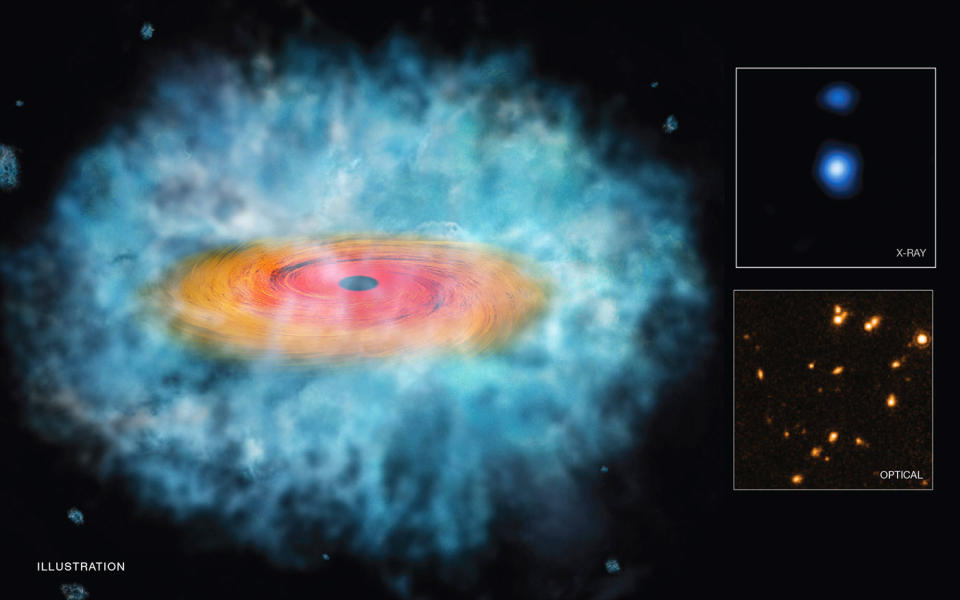Scientists believe supermassive black holes had speedy births
And that they were already born huge.

Supermassive black holes found in the center of galaxies like the Milky Way might be super-huge, because they were born big in the first place. A team of astronomers from the Scuola Normale Superiore in Italy found evidence that these gigantic celestial objects thousands to millions of times larger than our sun came from a special type of black hole seeds. These seeds formed "directly from the collapse of giant gas clouds" and didn't have to go through any intermediate steps, such as the explosion of a star.
While we still barely know anything about supermassive black holes at this point in time, scientists do have theories on how they formed. One suggests that they're the result of several smaller black holes merging into one. Another theory says these supermassives gobble up more food (that is, gas and dirt) from their surroundings. However, scientists believe that some of the biggest black holes took form merely a billion years after the Big Bang, and both those processes would've been too slow to reach the mass they have. According to Andrea Ferrara, one of the study's authors, their work suggests that supermassives "start big and grow at the normal rate, rather than starting small and growing at a very fast rate."
The astronomers in this study pulled out and combined data from Hubble, Chandra X-ray Observatory and Spitzer Space Telescope to find potential supermassive black hole seeds. They found two strong contenders, but we'll have to wait for quite some time for a follow up. They still need to gather more data, most likely from upcoming observatories such as the James Webb Space Telescope, for confirmation.
